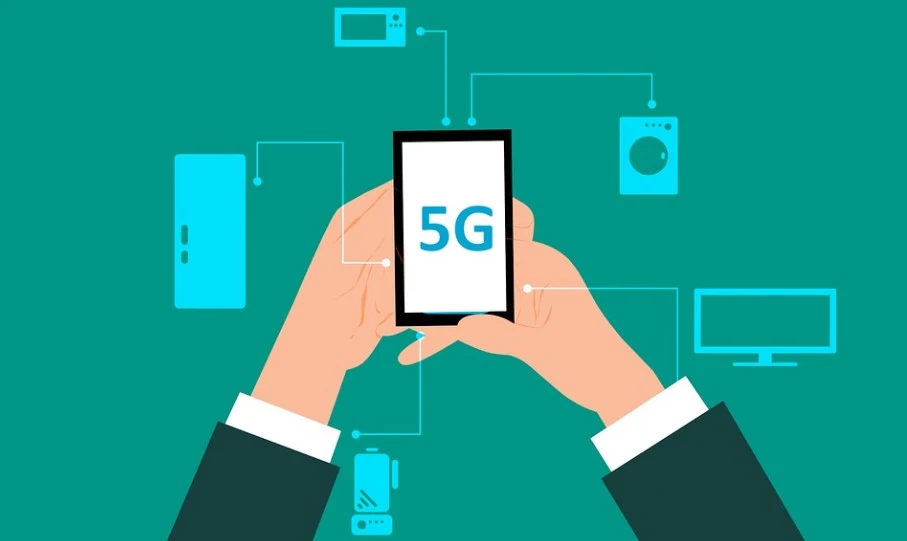5G Technology Facts You Need To Know

To understand how 5G works, all you need to know is that 5G will transfer data differently than previous generations. There are other important features of 5G: lower latency, support for more devices connected at the same time, but what you really need to know is that 5G is the latest generation of cellular networks and 5G will be incredibly fast. While 5G home internet uses the new 5G wireless spectrum, the process is pretty much the same as traditional home internet - you'll get a universal gateway device that connects to 5G towers in your area.
With faster data transfer rates, 5G ultra-broadband will eventually enable even more technologies to be connected, enabling the Internet of Things on a truly massive scale. Networks are expected to support IoT technology, providing the infrastructure needed to transfer the vast amounts of data that will make the world smarter and more connected. Many of these networks work alongside existing 3G and 4G technologies to provide a faster connection that stays online wherever you are. With the spread of 5G networks, the range of possibilities will increase dramatically.
In addition to mobile carrier networks, 5G should also be used for private networks with applications in industrial IoT, enterprise networks, and mission-critical communications. The 5G cellular network will also change the consumer experience of electronic goods, ushering in a new era in mobile video and bringing the massive growth of IoT and smart devices, as well as expanding the possibilities of augmented and virtual reality. With reduced latency, the ability to connect more smart devices, and ultra-fast data transfer rates, there is no doubt that 5G will be a big leap forward for mobile users once implemented. For some, 5G cellular simply promises to improve the cellular experience by delivering more broadband power and increasing mobile capacity and data speeds.
For others, however, new networking technologies are key to shaping the future of virtually every industry, fundamentally changing the way machines interact and function. The 5G cellular network can not only significantly reduce the overall cost of infrastructure, but also open the door to many new geospatial applications. The new 5G networks are based on a completely new technology called millimeter wave or mmWave. In different parts of the world, operators have launched many technologies from various brands, such as "5G Evolution", which advertise the improvement of existing networks using "5G technology".
As consumers and businesses become more aware of 5G technology, wireless service providers continue to roll out their 5G networks and differentiate their service offerings. Overall, fifth-generation (5G) wireless communications are expected to create many new applications, use cases, and business cases as the technology rolls out. In addition to improving speed, bandwidth, and latency, 5G offers network management capabilities, including network slicing, which allows mobile operators to create multiple virtual networks within the same subdivision of a physical 5G network, which allows mobile operators to create multiple virtual networks. virtual networks within the same physical 5G network. Network slicing will allow wireless network connections to support specific uses or business cases and can be sold as a service.
To offset the distance and interference problems associated with MM waves, the wireless industry is also considering using low frequency spectrum for fifth generation (5G) wireless networks so that network operators can use the spectrum they already have to build their new networks. According to Technology Business Research (TBR) Inc., network operators are expected to spend billions of dollars on 5G capital investments through 2030, although it is not clear how fifth-generation (5G) wireless services will recoup this investment. As Entner points out, the main impetus for 5G wireless comes not from corporate use of Wi-Fi technology in the building, but from the growing number of devices that will connect over the next three to four years. Communities are being told that neighborhoods need to build "small cell" towers to power 5G, the new technology that will connect the Internet of Things (IoT).
As phones evolve into devices designed specifically for VR headsets, 5G's extremely low latency and consistent speeds will bring you an internet-based world anytime, anywhere. According to CISA, "5G promises many improvements, delivering faster data transfer rates (extremely fast download speeds), ultra-low latency (near real-time interactivity), and greater network bandwidth (allowing more devices to simultaneously ). According to experts, high-performance capabilities will not only increase speed, but will also drive a technological revolution in augmented reality and virtual reality. This latest wave will increase the speed and capacity of networks to levels previously unimaginable, which will not only promote The development of the digital society will also promote the development of all the constituent technologies such as artificial intelligence and big data.
5G ultra-broadband data travels so fast that Ronan Dunn, executive vice president and general manager of the Verizon Consumer Group, said this technological breakthrough will usher in the fourth industrial revolution. This is likely to impact technology areas such as artificial intelligence and machine learning and lead to widespread adoption of technologies such as self-driving cars and smart homes, as well as telemedicine services such as remote surgery. All existing phones will still be able to connect to 4G networks and work flawlessly. On the other hand, because 5G networks integrate rather than replace existing 4G and 4G LTE networks, you won't need a new phone right away.
That's why T-Mobile is so excited about this kind of 5G, which is, so to speak, all over the country. The plan is to fully unify the carrier's network and brand under the new T-Mobile banner, but it's unclear when that will be formalized. For now, Sprint customers will continue to use theirs, but will also be connected to T-Mobiles' network.

Posting Komentar untuk "5G Technology Facts You Need To Know"
Posting Komentar